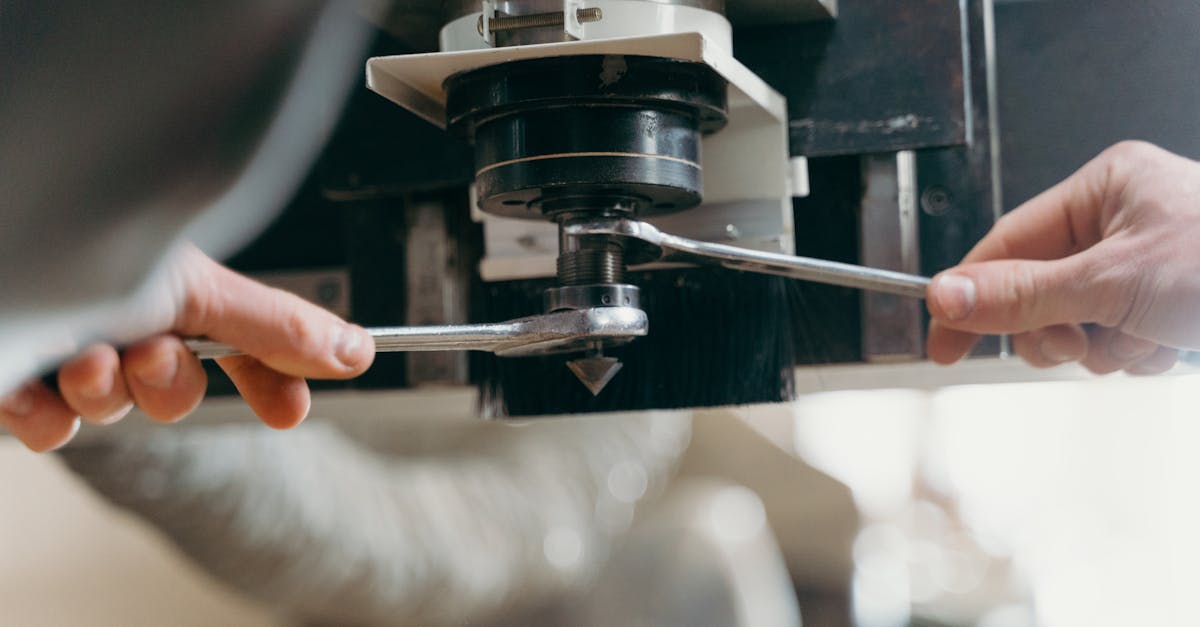Empowering the Gold Industry with Precision and Trust

Ensuring the Purity and Quality of Gold: The Vital Role of Quality Control Equipment
In the world of precious metals, trust and confidence are paramount. Gold, a timeless symbol of wealth and value, is no exception. Maintaining the integrity and authenticity of gold is crucial for upholding its status as a reliable store of value and a trusted medium of exchange. This is where quality control equipment plays a pivotal role, providing the means to ensure that gold meets the highest standards of purity and quality.
Throughout history, gold has been prized for its unique properties and scarcity. Its shimmering luster, exceptional malleability, and resistance to corrosion have made it an enduring symbol of wealth, power, and beauty. However, the value of gold is not merely based on its aesthetic appeal; it is its inherent purity and quality that determine its worth. To ensure that gold meets these expectations, the industry relies on a comprehensive suite of quality control equipment, ranging from precision testing devices to sophisticated measurement tools.
Key Insights: Ensuring Gold Purity and Quality through Effective Quality Control
- Key Insight: Quality control equipment is essential for ensuring the purity and quality of gold, maintaining trust and confidence in the gold industry.
- Key Insight: Various testing devices, such as XRF analyzers and fire assay techniques, are used to determine gold purity, each with its unique principles and applications.
- Key Insight: Precision instruments, including scales, calipers, and density meters, are employed to accurately measure gold’s physical properties, which play a crucial role in determining its value and authenticity.
- Key Insight: Regular calibration and maintenance of quality control equipment are paramount to ensure accurate and reliable measurements, upholding industry standards and maintaining the integrity of gold testing.
- Key Insight: Implementing effective quality control measures brings numerous benefits, including increased trust among stakeholders, enhanced transparency in gold transactions, and protection of consumer confidence.
1. Empowering Accuracy: Ensuring Gold Authenticity
In the world of precious metals, trust and confidence are the cornerstones of value. Gold, with its enduring allure and monetary significance, is no exception. Maintaining the integrity and authenticity of gold is paramount for upholding its status as a reliable store of value and a trusted medium of exchange. This is where quality control equipment steps into the spotlight, empowering the gold industry with the tools to ensure that gold meets the highest standards of purity and quality.
Quality control equipment plays a pivotal role in safeguarding the integrity of the gold supply chain, from mining and refining to manufacturing and distribution. By providing accurate and reliable measurements of gold purity, these tools help maintain trust among stakeholders, including consumers, investors, and governments. Accurate determination of gold content is essential for fair pricing, protecting consumers from fraud, and ensuring the credibility of gold as a financial asset.
2. Tools of the Trade: Testing Devices for Gold Purity

Tools of the Trade: Testing Devices for Gold Purity
The gold industry relies on a diverse range of testing devices to determine the purity of gold. These tools empower jewelers, assayers, and other professionals to accurately assess the gold content in various forms, from bullion and coins to jewelry and scrap. Among the most widely used testing devices are X-ray fluorescence (XRF) analyzers and fire assay techniques, each with its unique principles and applications.
XRF analyzers utilize the principles of X-ray fluorescence to determine the elemental composition of a material. When an X-ray beam is directed at a gold sample, the atoms in the sample absorb and re-emit X-rays at specific wavelengths. The pattern of these emitted X-rays provides a fingerprint that can be used to identify and quantify the elements present in the sample, including gold. XRF analyzers are portable, non-destructive, and provide rapid results, making them ideal for on-site testing and screening large quantities of gold.
Fire assay, on the other hand, is a traditional method that has been used for centuries to determine the purity of gold. This technique involves combining the gold sample with lead oxide and other reagents in a crucible and heating it in a furnace. The lead oxide reacts with the impurities in the gold, forming a slag that can be separated from the pure gold. The remaining gold is then weighed to determine its purity.
3. Precision Instruments: Measuring Gold’s Physical Properties
Beyond determining the purity of gold, it is also essential to accurately measure its physical properties, such as weight, dimensions, and density. These properties play a crucial role in determining the value and authenticity of gold, and a range of precision instruments are employed to assess them.
Scales, with their precise weighing mechanisms, are indispensable for determining the weight of gold. Whether it’s a delicate analytical balance for weighing small samples or a larger scale for bullion and bars, accurate weight measurements are essential for fair trading and ensuring that buyers receive the correct amount of gold. Calipers, with their adjustable jaws, provide precise measurements of the dimensions of gold objects, such as jewelry and coins. These measurements are crucial for determining the size, shape, and proportions of gold items, which can impact their value and authenticity.
Density meters, utilizing the principles of buoyancy and Archimedes’ principle, measure the density of gold. Density is a fundamental property of gold that can be used to assess its purity and identify potential counterfeits. Pure gold has a very high density, and any deviations from this expected density can indicate the presence of impurities or alloys.
4. Calibration and Maintenance: Ensuring Reliable Results

Calibration and Maintenance: Ensuring Reliable Results
The accuracy and reliability of quality control equipment are paramount in ensuring the integrity of gold testing and maintaining industry standards. Regular calibration and maintenance are essential to guarantee that these instruments consistently deliver precise and trustworthy measurements.
Calibration involves comparing the readings of a quality control device against a known standard to ensure that it is measuring correctly. This process helps identify any deviations from the expected values and allows for necessary adjustments to be made. Regular calibration ensures that the equipment remains within acceptable tolerances and minimizes the risk of erroneous measurements.
Proper maintenance is equally crucial to prolong the lifespan of quality control equipment and maintain its optimal performance. This includes regular cleaning, replacing worn-out parts, and addressing any technical issues promptly. By adhering to recommended maintenance schedules, businesses can minimize downtime, prevent costly repairs, and ensure the longevity of their equipment.
5. Industry Standards and Regulations: A Global Benchmark
The gold industry operates within a framework of established standards and regulations that govern the use of quality control equipment for gold testing. These standards and regulations play a crucial role in ensuring consistency, accuracy, and credibility across the industry, fostering trust among stakeholders and maintaining the integrity of gold transactions.
International organizations, such as the International Organization for Standardization (ISO), have developed comprehensive standards for gold testing equipment and procedures. These standards provide detailed guidelines on the design, calibration, and maintenance of quality control equipment, ensuring that it meets the highest levels of accuracy and reliability. By adhering to these standards, manufacturers and users of quality control equipment can demonstrate their commitment to quality and inspire confidence in the results obtained.
National and regional regulatory bodies also impose regulations on the use of quality control equipment for gold testing. These regulations often include requirements for the accreditation of testing laboratories, the certification of equipment, and the regular inspection of facilities to ensure compliance. By adhering to these regulations, businesses can demonstrate their commitment to ethical and responsible practices, strengthening the overall credibility of the gold industry.
6. The Benefits of Quality Control: Trust and Transparency
The Benefits of Quality Control: Trust and Transparency
Implementing effective quality control measures brings forth a myriad of benefits that positively impact the gold industry and its stakeholders. By ensuring the accuracy and reliability of gold testing, quality control fosters trust among buyers, sellers, and investors, creating a foundation for transparent and ethical transactions.
Enhanced trust leads to increased confidence in the gold market, attracting new participants and strengthening the overall stability of the industry. When stakeholders can rely on the accuracy of gold testing results, they are more likely to engage in transactions, knowing that they are dealing with genuine and fairly valued gold. This trust extends to consumers, who can be assured that the gold they purchase meets the standards they expect.
Transparency, fostered by effective quality control, is another key benefit. Accurate and reliable gold testing results provide a clear and verifiable record of the quality of gold, promoting transparency throughout the supply chain. This transparency helps prevent fraud and unethical practices, as stakeholders can easily identify and avoid dealing with disreputable actors.
7. Conclusion: Embracing Quality for a Golden Future
Conclusion: Embracing Quality for a Golden Future
The importance of quality control equipment in ensuring the integrity and value of gold cannot be overstated. By empowering the gold industry with the tools to accurately and reliably test gold purity and physical properties, quality control measures safeguard the trust and confidence upon which the industry thrives.
As we look towards the future of gold, embracing these techniques is paramount to maintaining the integrity of the gold supply chain and fostering a prosperous industry. By investing in quality control equipment and adhering to industry standards, businesses can demonstrate their commitment to ethical and responsible practices, building trust among stakeholders and inspiring confidence in gold as a valuable asset.
Let us embrace the transformative power of quality control to shape a brighter and more prosperous future for the gold industry. Together, we can ensure that gold remains a symbol of trust, value, and enduring beauty for generations to come.
What are the key benefits of implementing quality control measures in the gold industry?
Implementing quality control measures in the gold industry brings forth numerous benefits, including increased trust among stakeholders, enhanced transparency in gold transactions, and protection of consumer confidence. Effective quality control fosters trust by ensuring the accuracy and reliability of gold testing, leading to increased confidence in the gold market and attracting new participants. Transparency is promoted through clear and verifiable records of gold quality, preventing fraud and unethical practices. Consumer confidence is also bolstered as they can be assured of the authenticity and value of the gold they purchase.
How does quality control contribute to the integrity and value of gold?
Quality control plays a crucial role in safeguarding the integrity and value of gold. By accurately and reliably testing gold purity and physical properties, quality control equipment empowers the industry to maintain the highest standards of quality. This ensures that gold remains a trusted store of value and a reliable medium of exchange. Adherence to industry standards and regulations further strengthens the credibility of gold testing, fostering confidence among stakeholders and preserving the value of gold as a precious metal.
What are the latest advancements in quality control technology for gold testing?
The gold industry is constantly evolving, and so is the technology used for quality control. One of the most significant advancements is the development of portable X-ray fluorescence (XRF) analyzers. These devices allow for rapid, non-destructive testing of gold purity in the field, making it easier and more convenient to assess the quality of gold. Additionally, laser-induced breakdown spectroscopy (LIBS) is gaining traction as a promising technique for gold analysis, offering high precision and the ability to analyze small samples.
Table of Key Insights: Ensuring Gold Purity and Quality through Effective Quality Control
| Key Insight | Description | |—|—| | Importance of Quality Control Equipment | Quality control equipment is crucial for maintaining trust and confidence in the gold industry by ensuring the purity and quality of gold. | | Diverse Testing Devices for Gold Purity | XRF analyzers, fire assay techniques, and other devices are used to determine gold purity, each with its unique principles and applications. | | Precision Instruments for Physical Properties | Scales, calipers, and density meters are employed to accurately measure gold’s physical properties, which are essential for determining its value and authenticity. | | Regular Calibration and Maintenance | Proper calibration and maintenance of quality control equipment are essential to ensure accurate and reliable measurements, upholding industry standards and maintaining the integrity of gold testing. | | Benefits of Effective Quality Control | Implementing effective quality control measures brings numerous benefits, including increased trust among stakeholders, enhanced transparency in gold transactions, and protection of consumer confidence.

0 responses to “Importance of Quality Control Equipment in Ensuring Gold Purity and Quality”